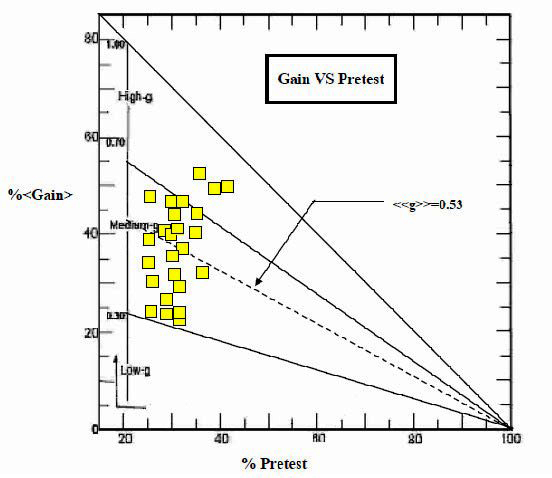การพัฒนาความเข้าใจแนวคิด เรื่อง คลื่นกล ของนักเรียนชั้นมัธยมศึกษาปีที่ 5 โดยใช้ซิปปาโมเดล
Main Article Content
Abstract
Yajai Jaisuk, Udom Tipparach and Choksin Tanahoung
รับบทความ: 23 กรกฎาคม 2553; ยอมรับตีพิมพ์: 13 กันยายน 2553
บทคัดย่อการวิจัยนี้มีวัตถุประสงค์เพื่อศึกษาการพัฒนาแนวคิด เรื่องคลื่นกล โดยใช้ซิปปาโมเดล ของนักเรียนชั้นมัธยมศึกษาปีที่ 5 โรงเรียนร่มเกล้าพิทยาสรรค์ สำนักงานเขตพื้นที่การศึกษามุกดาหาร ปีการศึกษา 2552 จำนวน 27 คน เครื่องมือที่ใช้ในการวิจัย ได้แก่ แผนจัดการเรียนรู้ตามรูปแบบซิปปา แบบทดสอบวัดแนวคิดเชิงวิทยาศาสตร์ แบบสำรวจความพึงพอใจ แบบสัมภาษณ์นักเรียน วิเคราะห์ข้อมูลโดยหาค่าเฉลี่ย ค่าร้อยละ ค่าเบี่ยงเบนมาตรฐาน ทดสอบค่าที และ normalized gain ผลการ วิจัยพบว่า นักเรียนมีความเข้าใจ เรื่องคลื่นกล สูงขึ้นหลังจัดการเรียนรู้ (p < .01) และนักเรียนมีการพัฒนาแนวคิดรายชั้นอยู่ระดับปานกลาง (average normalized gain, <g> เท่ากับ 0.53) โดยนักเรียนมีพัฒนาการของแนวคิดระดับสูงในหัวข้อการหักเหของคลื่นและการสะท้อนของคลื่น นอกจากนี้นักเรียนยังมีแนวคิดคลาดเคลื่อนอยู่บ้างในหัวข้ออัตราเร็วคลื่นและการแทรกสอดคลื่น ผลจากสอนแสดงให้เห็นว่า การใช้ซิปปาโมเดลสามารถช่วยพัฒนาแนวคิด เรื่องคลื่นกล ของนักเรียนได้ นอกจากนี้นักเรียนมีความพึงพอใจต่อการการจัดการเรียนรู้ระดับดี และการสอนตามรูปแบบดังกล่าวเป็นกิจกรรมที่เน้นให้ผู้เรียนเกิดการเรียนรู้และการทำงานเป็นกลุ่ม นักเรียนมีส่วนร่วมในการทำกิจกรรมทั้งทางด้านร่างกาย สติปัญญา อารมณ์ สังคม ส่งผลให้เกิดการเรียนรู้ได้อย่างมีประสิทธิภาพ เกิดความสุข สนุกสนานในการเรียนคำสำคัญ: ซิปปาโมเดล ความเข้าใจแนวคิด คลื่นกล
AbstractThe purpose of this research was to study the development of the students’ conceptions on mechanical waves using CIPPA model. The target group was 27 students from Mattayomsuksa V, Romklao Pittayasan School, Mukdahan studying in the second semester of academic year 2009. The one group pretest - posttest design was employed in carrying out the study. The research tools consisted of lesson plans based on the CIPPA model, the mechanical wave conceptual test, the learning activity record forms and interview forms. The data were analyzed as the average percentage, standard deviation, t-test and normalized gain. The result showed that there was statistically significant mean difference between the pre-test and post-test (p < .01). The class average normalized gain was in the medium gain <g> = 0.53. Moreover, it was found the normalized gains in the conceptual areas of refraction of waves and reflection of waves were high. The students had difficultly to achieve high normalized gains of two conceptual areas, speed of waves and interference of waves. The result indicated that CIPPA model can be used to develop students’ conceptual understanding on mechanical waves. Mainly, the students showed enthronization and enjoy learning and made the students participating, physically, intellectually, emotionally as well as socially. The students had an opportunity to experience from actual practice to build up new body of knowledge by themselves, to interact with the teacher and among themselves. Keywords: CIPPA model, Conceptual understanding, Mechanical waves
Downloads
Article Details

This work is licensed under a Creative Commons Attribution-NonCommercial 4.0 International License.
References
ทิศนา แขมมณี. (2541). การจัดการเรียนการสอนแบบผู้เรียนเป็นศูนย์กลาง. เอกสารประกอบการสอน คณะครุศาสตร์ จุฬาลงกรณ์มหาวิทยาลัย.
ทิศนา แขมมณี. (2542). การจัดการเรียนรู้โดยใช้รูปแบบซิปปา. กรุงเทพฯ: จุฬาลงกรณ์มหาวิทยาลัย.
นภาวรรณ ประดับคำ. (2548). ผลการใช้ซิปปาโมเดลในกิจกรรมการเรียนรู้วิชาฟิสิกส์ สำหรับนักเรียน ชั้นมัธยมศึกษาปีที่ 5. รายงานการ ศึกษาอิสระปริญญาศึกษาศาสตรมหาบัณฑิต (วิทยาศาสตรศึกษา) ขอนแก่น: มหาวิทยาลัย ขอนแก่น.
พลมณี สีลิพง. (2549). ผลการจัดกิจกรรมการเรียนการสอนโดยใช้รูปแบบซิปปาในวิชาฟิสิกส์ ของนักเรียน ชั้นมัธยมศึกษาปีที่ 4 ประเทศสาธารณรัฐประชาธิปไตยประชาชนลาว. วิทยานิพนธ์ปริญญาศึกษาศาสตรมหาบัณฑิต ขอนแก่น: มหาวิทยาลัยขอนแก่น.
ศิลปะชัย บูรณพานิช. (2549). รายงานผลการวิจัยและพัฒนาการสร้างมโนทัศน์ เรื่อง การเคลื่อนที่แบบหมุนโดยใช้กิจกรรมการทดลองและการสาธิตของนักเรียนชั้นมัธยมศึกษาตอนปลาย (ฉบับสรุป). สำนักงานเลขาธิการสภา การศึกษา กรุงเทพฯ: สกศ.
ศิริเดช สุชีวะ. (2538). การพัฒนาวิธีการวินิจฉัยสำหรับตรวจสอบมโนทัศน์ที่คลาดเคลื่อนทางคณิตศาสตร์. ปริญญาครุศาสตรดุษฎีบัณฑิต กรุงเทพฯ: จุฬาลงกรณ์มหาวิทยาลัย.
สมจิตร ไพรินทร์. (2550). การพัฒนาแผนการจัดกิจกรรมการเรียนรู้แบบ ซิปปา วิชาฟิสิกส์ เรื่องไฟฟ้าสถิต ชั้นมัธยมศึกษาปีที่ 6. วิทยานิพนธ์ปริญญาศึกษาศาสตรมหาบัณฑิต (วิทยาศาสตรศึกษา). ขอนแก่น: มหาวิทยาลัยขอนแก่น.
Dykstra, D. I., et. al. (1992). Studying Conceptual change in learning Physics. Sci. Educ. 76(6): 615-652.
Hake, R. (1998). Interactive-engagement vs traditional methods: A six-thousand survey of mechanics test data for introductory physics courses. Am. J. Phys. 66: 64-74.
Wittmann, M. C. (2002). The object coordination class applied to wave pulses: Analysing student reasoning in wave physics. Internat. J. Sci. Educ. 24(1): 97-118.
